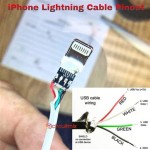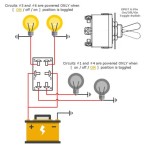Two way electrical light switch wiring is a configuration that allows a single light fixture to be controlled from two different locations. It employs a pair of switches that are connected to the same circuit and operate in tandem. When one switch is flipped, it completes the circuit, turning the light on, while flipping the other switch breaks the circuit, turning the light off. This setup provides convenient and efficient light control in areas that require illumination from multiple access points.
Two way light switch wiring offers several benefits. It enhances safety and convenience by allowing individuals to turn lights on or off from either end of a room or hallway. It optimizes energy consumption by reducing the likelihood of lights being left on inadvertently. Historically, this wiring method emerged as a significant advancement in home electrical systems, improving the functionality and comfort of residential spaces.
This article will delve deeper into the technical details, variations, and practical applications of two way electrical light switch wiring, providing comprehensive insights into its significance and evolution in modern electrical systems.
Understanding the essential aspects of Two Way Electrical Light Switch Wiring is crucial for grasping its significance and applications in electrical systems. These aspects encompass the fundamental components, functionality, and factors that shape the design and implementation of this wiring method.
- Circuit Configuration: The arrangement of electrical components that allows the light to be controlled from two locations.
- Switch Types: The specific types of switches used, such as single-pole or double-pole, and their characteristics.
- Wiring Diagram: The schematic representation of the circuit, showing the connections between components.
- Electrical Load: The amount of current drawn by the light fixture and its impact on switch selection.
- Voltage Requirements: The voltage at which the circuit operates and its compatibility with the light fixture.
- Safety Considerations: The importance of proper grounding, insulation, and circuit protection.
- Code Compliance: Adherence to electrical codes and standards to ensure safety and functionality.
- Tools and Materials: The necessary tools and materials for installation and maintenance.
- Troubleshooting: Common problems and techniques for resolving them.
- Advanced Features: Additional functionalities, such as dimming or motion detection, that can be integrated.
These key aspects provide a comprehensive overview of Two Way Electrical Light Switch Wiring, enabling a thorough understanding of its technical details, practical considerations, and broader implications in electrical systems.








Related Posts








